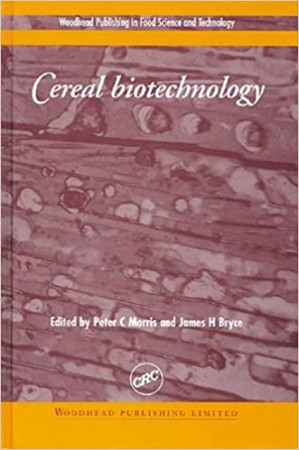Cereal biotechnology
Keterangan Bibliografi
| Pengarang | : Morris, Peter C. (editor) |
| Pengarang 2 | : |
| Kontributor | : Bryce, James H. (editor) |
| Penerbit | : Woodhead Publishing Limited |
| Kota terbit | : Cambridge-England |
| Tahun terbit | : 2000 |
| ISBN | : 1 85573 498 |
| Subyek | : cereal - commercial processing |
| Klasifikasi | : 664.7 Mor c |
| Bahasa | : English |
| Edisi | : |
| Halaman | : 251 hlm.: ilus. |
Jenis Koleksi Pustaka
E-Book
Kategori Pustaka
Tidak ada kategori
Abstraksi
Cereals are members of the large monocotyledonous grass family, the Gramineae. The flowering organs are carried on a stem called the rachis, which may be branched, and in turn bears spikelets which may carry more than one flower at each node of the rachilla. Cereals have developed their importance as food plants because they are high yielding, with world average yields around three tonnes per hectare. The grains are very nutritious; generalised cereal grain contents (which will of course vary with species, growing conditions and variety) are: carbohydrates (70%), protein (10%), lipids (3%) (Pomeranz 1987).Different cereals have risen to eminence in different quarters of the globe because of geographical provenance and because of differing climatic and environmental requirements for growth, but their shared favourable characteristics underline their importance as staple foodstuffs. Three cereals – wheat, maize and rice – make up the bulk of world cereal production, but five other cereal crops also make important contributions to world nutrition, and to food and drink production. In order of global production tonnage, these are barley, sorghum, millet, oats and rye. During the brief history of modern cereal biotechnology, the development of innovative products has captured a great deal of academic interest and corporate attention, with such innovation being viewed as a highly visible source of competitive advantage. The increasing complexity of transgenic plant products, especially those containing metabolically engineered output traits,1 will raise the cost of launching the next generation of products in cereal biotechnology. Then, more than ever, firms involved in cereal biotechnology will have to pursue two seemingly incompatible goals: increasing product differentiation while reducing manufacturing costs and development times in an effort to commercialise effectively their products. Transgenic plant lines containing independent transgenes and independent transgenic insertion events are backcrossed and evaluated at a number of different breeding locations. This is done, in part, to evaluate transgene efficacy under a number of different environmental conditions. Within this breeding and evaluation process there exists the potential for line and/or gene misidentification. In breeding programs transgenic lines are often identified by screening for the presence of a more readily detectable selectable marker gene (e.g. herbicide resistance) that was co-introduced with the transgene of interest.
Inventaris
| # | Inventaris | Dapat dipinjam | Status Ada |
| 1 | 9181/P1/2020.c1 | Ya | |
| 2 | 9182/P1/2020.c2 | Ya | |
| 3 | 9183/P1/2020.c3 | Ya | |
| 4 | 9184/P1/2020.c4 | Ya | |
| 5 | 9185/P1/2020.c5 | Ya | |
| 6 | 9186/P1/2020.c6 | Ya |
